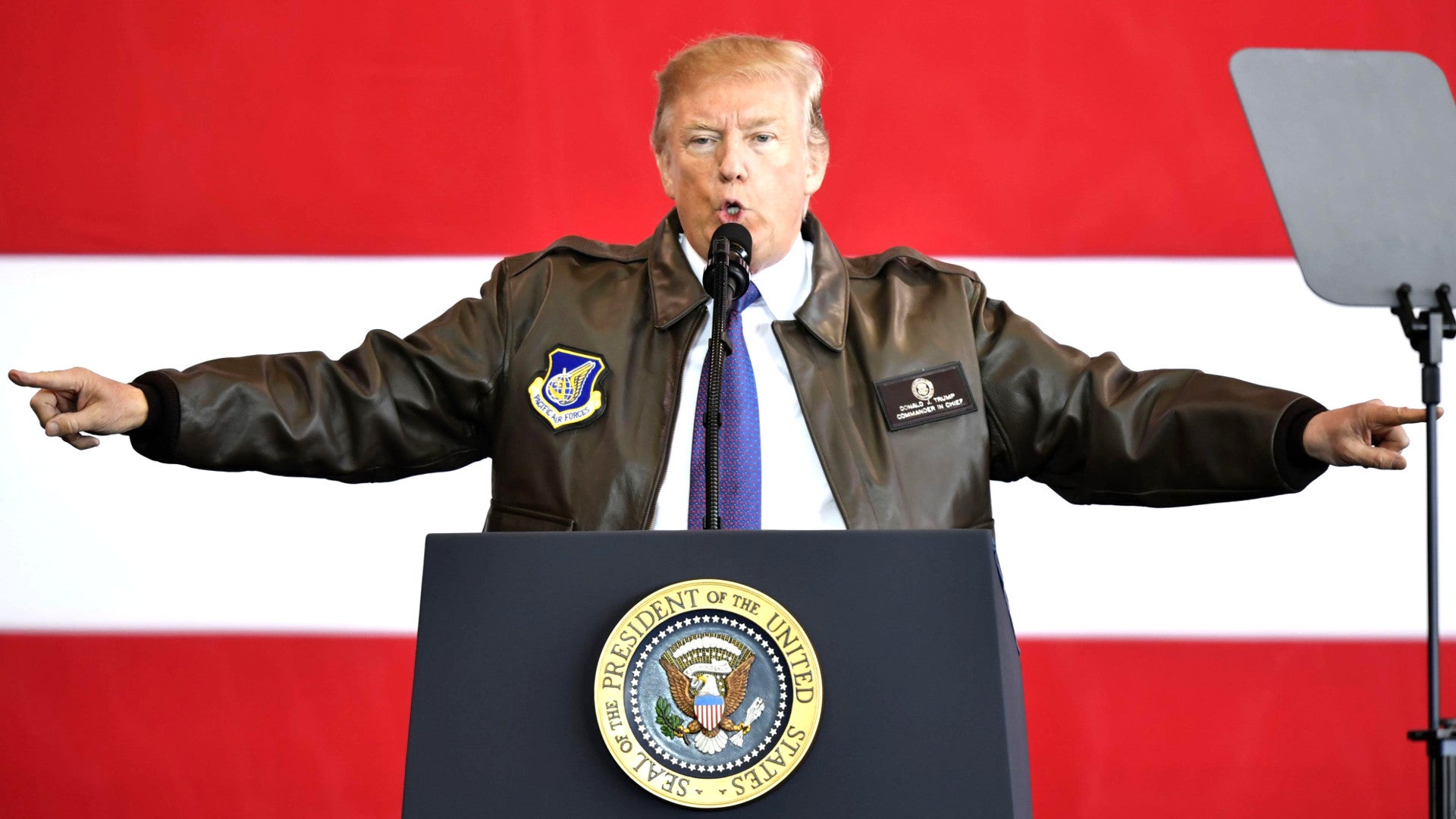During the 2016 U.S. presidential election campaign, then candidate Donald Trump spent a considerable amount of time highlighting potential threats to the United States at home and abroad. Now after nearly a year in office, full of national and international crises, the president has unveiled a new national security strategy that he insists will put “America first.”
On Dec. 18, 2017, the White House released the full strategy in text form ahead of Trump’s speech announcing the latest over-arching security policies for America. The nearly 60-page document does outline The Trump Administration’s broad understanding of the present geo-political situation around the world, America’s interests within that context, potential threats to those goals, and what the U.S. government can do to safeguard itself.
The White House broke down this national security overview into four core national security pillars: protecting the American way of life, promoting American prosperity, preserving peace through strength, and advancing American influence. Though non-binding and broadly worded, the strategy does offer a new sense of the Trump Administration’s desired direction for the country.
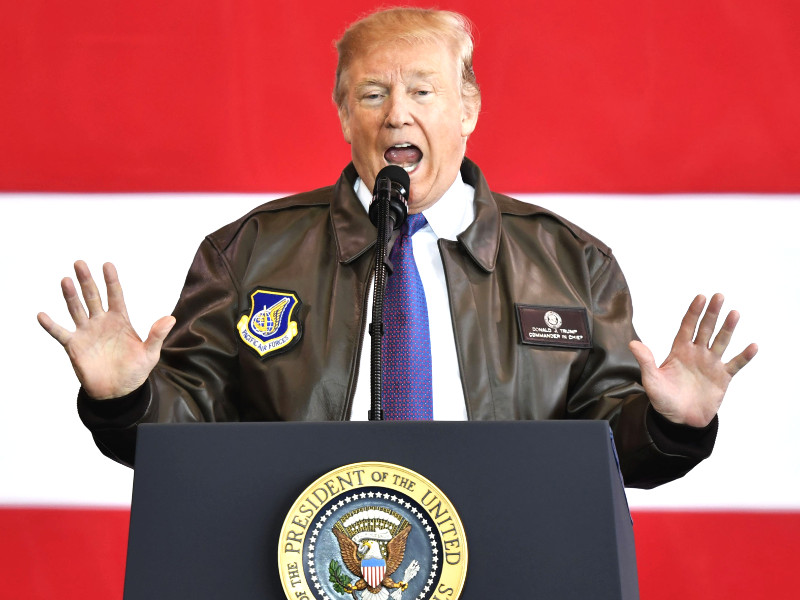
By way of introduction
- In his written introduction, Trump said “I pledged that we would revitalize the American economy, rebuild our military, defend our borders, protect our sovereignty, and advance our values” and that “the United States faces an extraordinarily dangerous world, filled with a wide range of threats that have intensified in recent years.”
- The president specifically calls out North Korea, Iran, “radical Islamist terror groups,” and “criminal cartels,” as well as “unfair trade practices” and “unfair burden-sharing with our allies.”
- Already in 2017, Trump has announced major policy shifts with regards to the war in Afghanistan, countering Iran and its government’s influence outside the country, and the status of the city of Jerusalem.
- “This National Security Strategy puts America first” and “it is a strategy of principled realism that is guided by outcomes, not ideology.”
- The full introduction appeals to the ideals of America’s founding principles and traditions, including freedoms enshrined in the Constitution and a respect for the rule of law, noting that “we are proud of our roots and honor the wisdom of the past.”
- “America’s achievements and standing in the world were neither inevitable nor accidental.”
- The document specifically mentions the fight to “end slavery” during the American Civil War and the African-American civil rights movement, as well as the U.S. military’s participation in World War I and World War II and the Cold War.
- The United States has “defeated fascism, imperialism, and Soviet communism and eliminated any doubts about the power and durability of republican democracy,” it notes, but does not make any mention of America’s own history as a colonizer.
- The new national security strategy says these successes “bred complacency,” as other “countries exploited the international institutions we helped to build.”
- Though it offers no specific examples, the written introduction lambasts unnamed foreign powers and past U.S. presidential administrations as having weakened America’s competitiveness abroad and overburdened Americans with regulations and taxes at home – common, but disputed mantras that Trump repeated during his presidential campaign and after taking office.
- “The United States will respond to the growing political, economic, and military competitions we face around the world.”
- Russia and China are both challengers to American interests militarily and economically, the overview notes, before again highlighting the threats that North Korea, and Iran, as well as “jihadist terrorists to transnational criminal organizations pose.”
- “Rival actors use propaganda and other means to try to discredit democracy,” the national security strategy declares, but makes no specific mention of the widely accepted view that the Russian government directly and actively interfered in the 2016 U.S. presidential election.
- It does however specifically mention the “barbaric ideology” of ISIS, Al Qaeda, and other “jihadist terrorists,” and their desire to impose “Sharia law.” There are numerous, unfounded conspiracy theories in the United States that American Muslims and immigrants who practice Islam are seeking to impose these Islamic tenants on the rest of the country.
- The introduction also notes growing conventional and nuclear challenges to U.S. military superiority, but only specifically mentions North Korea’s weapons of mass destruction – including chemical and biological weapons – and its “advanced missiles.”
- “We learned the difficult lesson that when America does not lead, malign actors fill the void to the disadvantage of the United States.”
- “Competition does not always mean hostility, nor does it inevitably lead to conflict – although none should doubt our commitment to defend our interests.”
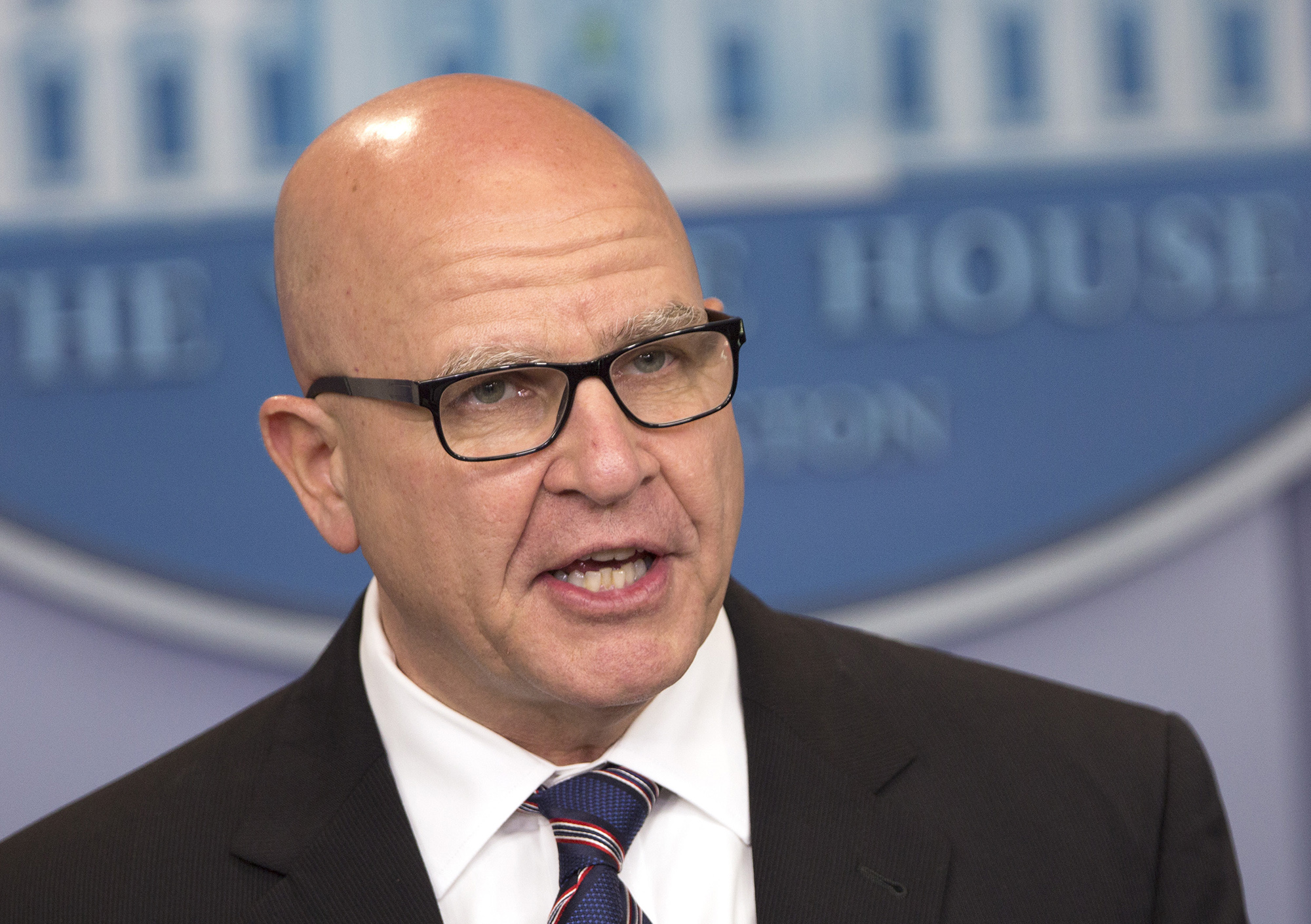
Pillar I: Protecting the American people, the homeland, and the American way of life
- “We will strengthen control of our borders and reform our immigration system. We will protect our critical infrastructure and go after malicious cyber actors. A layered missile defense system will defend our homeland against missile attacks. And we will pursue threats to their source, so that jihadist terrorists are stopped before they ever reach our borders.”
- This first pillar places military attacks from nation states such as North Korea and Iran, terrorist attacks by foreign and domestic actors, drug and human trafficking, intellectual property theft, unfair trade practices, and foreign interference in American political institutions together as the major security threats to the United States and the American way of life.
- Though the issue of terrorism is heavily framed around the threat of “jihadist terrorists,” the strategy does declare that “the United States rejects bigotry and oppression and seeks a future built on our values as one American people. We will deny violent ideologies the space to take root by improving trust among law enforcement, the private sector, and American citizens.”
- The need for improved border security, to include the construction of President Trump’s signature border wall and travel bans, are necessary to defend against attacks on the homeland involving weapons of mass destruction, as well as other terror plots, to protect against pandemic diseases, halt transnational criminal activity, protect America from dangerous cyber attacks, and shield critical civilian infrastructure, such as power grids, from physical, cyber, and electromagnetic pulse weapons, more commonly known as EMPs.
- The proposed responses to each of these threats revolve heavily around calls for more and better intelligence, including sharing information with allies, taking direction action to neutralize threats “at the source” abroad and encouraging foreign partners to do more themselves, and holding anyone who harbored hostile actors or threatens American interests accountable.
- In his speech, Trump chose to highlight the sharing of intelligence about a potential terrorist attack with Russian President Vladimir Putin.
- “Yesterday I received a call from President Putin of Russia thanking our country for the intelligence that our CIA was able to provide them concerning a major terrorist attack planned in St. Petersburg, where many people, perhaps in the thousands, could have been killed. They were able to apprehend these terrorists before the event, with no loss of life. And that’s a great thing, and the way it’s supposed to work. That is the way it’s supposed to work.”
- We have already seen other examples of this policy with the Trump Administration’s increased willingness to authorize sensitive special operations raids, including in Yemen, Somalia, and across Africa. Trump has also been adamant that America’s allies must contribute more to their shared defense and that partners, such as Pakistan, must do more to combat terrorists within their borders.
- There were also specific calls for improved and expanded ballistic missile defenses, biomedical innovation to combat infectious diseases, building more secure government computer networks, hardening critical civilian infrastructure against cyber attacks, improving the overall preparedness and readiness of average American citizens for any potentially catastrophic event.
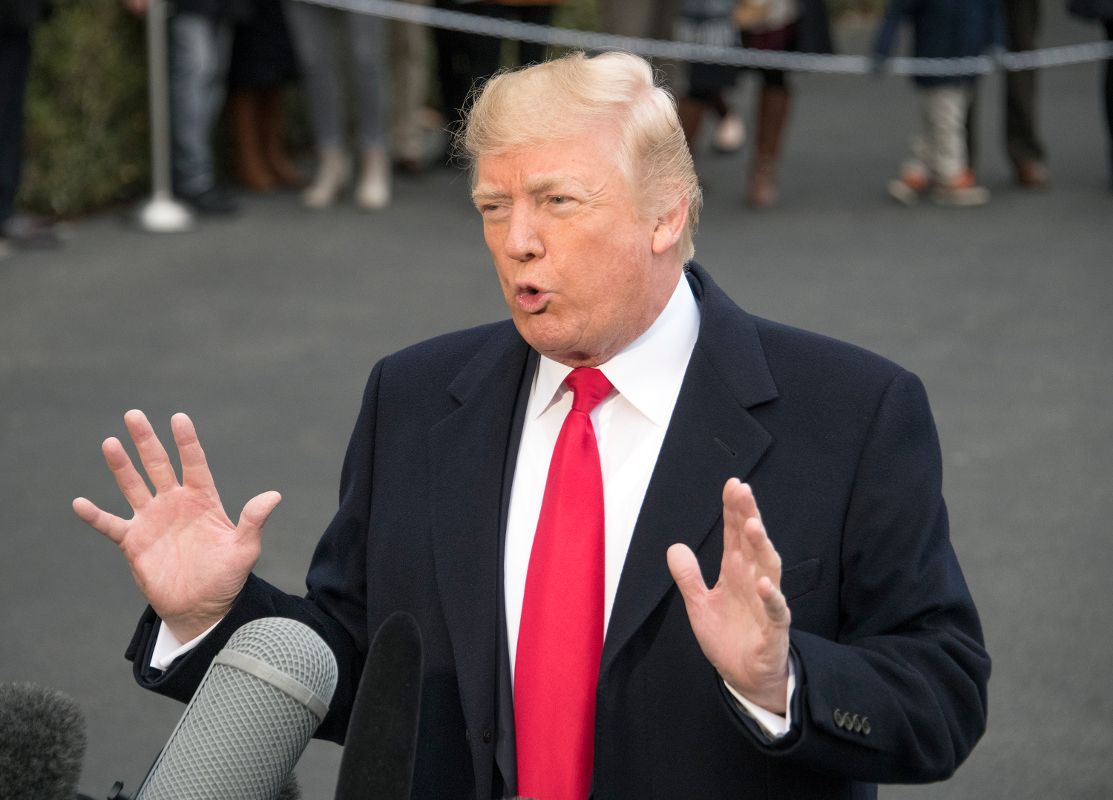
Pillar II: Promote American Prosperity
- “We will rejuvenate the American economy for the benefit of American workers and companies. We will insist upon fair and reciprocal economic relationships to address trade imbalances. The United States must preserve our lead in research and technology and protect our economy from competitors who unfairly acquire our intellectual property. And we will embrace America’s energy dominance because unleashing abundant energy resources stimulates our economy.”
- The Trump administration links economic success directly to national security in its overall strategy, focusing on domestic factors, international relationships, encouraging American innovation, and supporting the American energy sector.
- In line with the Republican Party’s principles, though economists debate the actual existing and potential impacts, the strategy says that eliminating regulations, reducing taxes, and cutting the national debt are essential to improving the domestic economy.
- “As the world watches — and the world is indeed watching — we are days away from passing historic tax cuts for American families and businesses. It will be the biggest tax cut and tax reform in the history of our country,” Trump said in his speech, declining to mention the widespread view that the tax plan will dramatically increase the national debt.
- There was also a call for improving domestic infrastructure, which is another of Trump’s much repeated campaign promises.
- “Let me begin by expressing our deepest sympathies and most heartfelt prayers for the victims of the train derailment in Washington State,” Trump said the the beginning of his speech. “It is all the more reason why we must start immediately fixing the infrastructure of the United States.” It is not clear whether the state of the rail infrastructure actually played a part and initial reports suggested an obstruction on the tracks could have been the cause of the accident.
- There was a separate call for developing programs intended to help Americans get the skills necessary for manufacturing jobs and science, technology, engineering, and mathematics careers.
- Though there was no specific mention of existing trade agreements such as the North American Free Trade Agreement (NAFTA), which Trump has repeatedly criticized, the national security strategy does call for new and “modernized” trade deals. The Trump Administration’s commitment to building new trade partnerships is somewhat undermined by its scuttling of the Trans-Pacific Partnership (TPP) and hostility to the Transatlantic Trade and Investment Partnership, or T-TIP.
- In addition, the United States should work with “like-minded partners” to counter unfair and corrupt foreign trade practices and other economic activities and to craft unspecified “new market opportunities.”
- There is a broad call for kick-starting American innovation in science and technology and finding new ways to attract both talented individuals and capital for such projects.
- The U.S. government should make increased use of public-private partnerships between the U.S. government, universities, private companies, and other organizations, especially for advanced defense and security-focused research and development.
- The United States needs strong intellectual property protections and similar defenses to guard the National Security Innovation Base (NSIB) against “economic theft” and espionage, particularly by China. The U.S. government routinely accuses the Chinese government of stealing military and civilian technical data and other sensitive information, especially through cyber attacks.
- Congress should strengthen the Committee on Foreign Investment in the United States, or CFIUS, to make sure it better prevents potential opponents from “illicit appropriation of U.S. public and private sector technology and technical knowledge.”
- An improved and broad emphasis on cyber security will also help defend against the theft of sensitive information.
- In a major break from President Barak Obama’s Administration, the Trump Administration’s initial national security strategy defines expanding America’s own energy resources as a major imperative and cites global policies intended to mitigate climate change as an implicit threat to U.S. national security.
- The strategy mentions coal, oil, natural gas, and nuclear power by name, but does not talk about hydroelectric, solar, wind, or similar power sources. These are referred to collectively as “renewables.”
- President Trump, who has voiced support for advanced fossil fuel technologies such as “clean coal,” has already announced his intention to withdraw from the Paris Agreement on climate change.
- “U.S. leadership is indispensable to countering an anti-growth energy agenda that is detrimental to U.S. economic and energy security interests.”
- “The United States will remain a global leader in reducing traditional pollution, as well as greenhouse gases, while expanding our economy. is achievement, which can serve as a model to other countries, flows from innovation, technology breakthroughs, and energy efficiency gains, not from onerous regulation.”
- The report does not specifically note that the Department of Defense remains concerned about the impacts of global climate change both as a cause of instability worldwide and potential danger to its own facilities and activities.
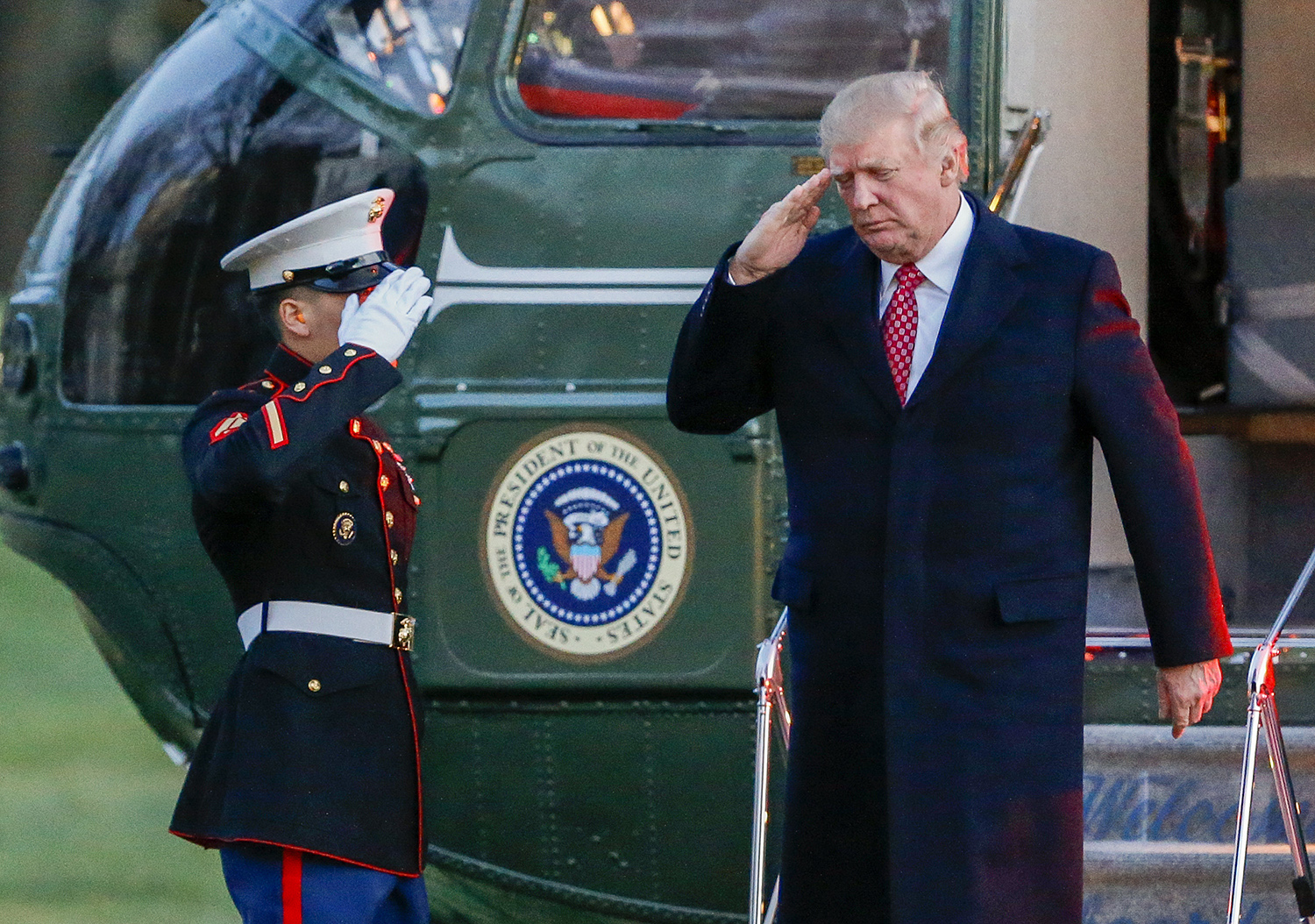
Pillar III: Preserve Peace Through Strength
- “We will preserve peace through strength by rebuilding our military so that it remains preeminent, deters our adversaries, and if necessary, is able to fight and win. We will compete with all tools of national power to ensure that regions of the world are not dominated by one power. We will strengthen America’s capabilities – including in space and cyberspace – and revitalize others that have been neglected. Allies and partners magnify our power. We expect them to shoulder a fair share of the burden of responsibility to protect against common threats.”
- “Peace through strength” has been a common phrase among Republicans since President Ronald Reagan popularized it as a party slogan in the 1980s. After Trump took office in January 2017, now disgraced former National Security Advisor Michael Flynn cited it as a central tenant of the administration’s foreign policy.
- The third pillar reiterates the central categories of threats that are present throughout the rest of the strategy, Russia and China, North Korea and Iran, and terrorists and other trans-national criminals.
- “China seeks to displace the United States in the Indo-Pacific region, expand the reaches of its state-driven economic model, and reorder the region in its favor.”
- “Russia aims to weaken U.S. influence in the world and divide us from our allies and partners.”
- “The Iranian regime sponsors terrorism around the world. It is developing more capable ballistic missiles and has the potential to resume its work on nuclear weapons that could threaten the United States and our partners.”
- The national security strategy specifically says that Iran’s actions have helped reinforce that in the Middle East that “Israel is not the cause of the region’s problems” and that “states have increasingly found common interests with Israel in confronting common threats.”
- There had been some evidence to support this conclusion before the Trump Administration decided to recognize Jerusalem as Israel’s capital earlier in December 2017. On Dec. 18, 2017, the United States used its veto power in the United Nations Security Council Resolution to block a statement the other 14 members – including major American allies and partners such as the United Kingdom, France, Germany, and Japan – had voted for calling for the U.S. government to reverse its decision on the matter.
- “North Korea is ruled as a ruthless dictatorship without regard for human dignity. For more than 25 years, it has pursued nuclear weapons and ballistic missiles in defiance of every commitment it has made.”
- “Jihadist terrorist groups such as ISIS and al-Qa’ida … are linked by a common radical Islamist ideology that encourages violence against the United States and our partners and produces misery for those under their control.”
- To combat these threats, the national security strategy calls for a significant buildup of the U.S. military, both in size and capability, specifically criticizing the idea that American technological superiority can make up for a shrinking overall force. This theory has increasingly been a hallmark of America military planning since the end of the Cold War, linked to the notion of the so-called “Revolution in Military Affairs” and reinforced by the idea of the “Third Offset,” which you can read about more here.
- “The United States must retain overmatch – the combination of capabilities in sufficient scale to prevent enemy success and to ensure that America’s sons and daughters will never be in a fair fight.”
- There are broad calls for the improvements in conventional military capabilities, continued modernization of the three legs of America’s nuclear triad, and safeguarding and rejuvenating the defense industrial base to be able to sustain this growth.
- Notably, the strategy may allude to up-coming changes in the situations where the United States sees the use of nuclear weapons as acceptable, which will likely come out in full as part of the forthcoming, separate Pentagon-wide nuclear posture review. At present, the United States does not have a “no first use policy,” but still states that it will not use nuclear weapons except except in response to a very specific set of parameters.
- “While nuclear deterrence strategies cannot prevent all conflict, they are essential to prevent nuclear attack, non-nuclear strategic attacks, and large-scale conventional aggression. In addition, the extension of the U.S. nuclear deterrent to more than 30 allies and partners helps to assure their security, and reduces their need to possess their own nuclear capabilities.”
- There are also calls for new defense and security efforts in space and cyberspace. The Trump Administration has already been pushing heavily for a renewed focus on manned space activities, reestablishing the National Space Council under the leadership of Vice President Mike Pence, and has elevated the status of the U.S. military’s Cyber Command.
- The Intelligence Community’s should continue to expand and improve its ability to collect and fuze information from multiple sources for intelligence and counter-intelligence purposes. The national security strategy gives special emphasis to combing open sources for information, which would include social media and other internet-based sources.
- To pay for all this, in his speech, Trump called for the elimination of mandatory spending caps that have been in place as a result of the 2011 Budget Control Act, a process known commonly as sequestration. “Our strategy breaks from the damaging defense sequester. We’re going to get rid of that.”
- Any president would have limited control over this decision as it is responsibility of congress, though. Legislators continue to struggle to fund full budgets, continue to rely on short-term “continuing resolutions” to keep the government in operation.
- In addition, the defense budget for the 2018 fiscal year that lawmakers passed in November 2017 and Trump signed into law earlier in December 2017 doesn’t call for the increase in funding that would be necessary to make Trump’s promises of greatly enlarged military a reality.
- In addition to military developments, the idea of peace through strength in the national security strategy does include a focus on diplomacy, but with an emphasis on military cooperation.
- “We must enable forward-deployed field work beyond the confines of diplomatic facilities, including partnering with military colleagues in conflict-affected states.”
- Diplomats should also focus on forging economic relationships with American allies and partners that favor the United States and employing economic pressure and sanctions against opponents.
- The diplomatic corps is should be the forefront of countering hostile propaganda and “weaponized information” from both state-run media and proxies, such as “trolls” on the internet, a term describing social media accounts and other sources of information that deliberately spread false or damaging information to inflame tensions.
- The national security strategy specifically highlights China’s use of artificial intelligence to scrape and categorize public internet information about its citizens, Russian information warfare, and terrorist groups recruiting and radicalizing individuals online.
- “We must consider more cost-effective and efficient ways to deliver and evaluate content consistent with U.S. national security interests.”

Pillar IV: Advance American Influence
- “We will advance American influence because a world that supports American interests and reflects our values makes America more secure and prosperous. We will compete and lead in multilateral organizations so that American interests and principles are protected. America’s commitment to liberty, democracy, and the rule of law serves as an inspiration for those living under tyranny. We can play a catalytic role in promoting private-sector-led economic growth, helping aspiring partners become future trading and security partners. And we will remain a generous nation, even as we expect others to share responsibility.”
- The national security strategy calls for “encouraging aspiring partners” since developing countries with weak institutions and other fragile or failing states are generally the greatest source of instability and threats to U.S. interest.
- The prime vehicle the Trump Administration has outlined this development is economic, including via public-private partnerships and otherwise encouraging private interests to invest in projects with foreign allies and partners. Those projects have to be of mutual benefit to the United States, though.
- The strategy specifically insists that this wouldn’t be akin to colonial mercantilism and would benefit both parties.
- Though China is not mentioned by name, this proposed policy seems specifically targeted at countering the influence the Chinese has gained, especially in Africa, through economic investments and incentives.
- The Trump Administration is also calling for a renewed focus on American interests in multilateral forums, such as the United Nations, the International Monetary Fund, and World Trade Organization. Trump has personally accused many international organizations of taking an unfair stance toward the United States and its allies.
- There is a specific call for preserving a “free and open internet” worldwide, though critics of the Federal Communication Commission’s recent repeal of so-called “Net Neutrality” rules might contend the Trump administration has not put this policy into practice domestically.
- Lastly, there is requirement to champion American values, particularly political and religious freedoms, empowering women and youth, and promoting better worldwide food security and healthcare. There is no specific mention of defending the rights of homosexuals and transgender individuals.
You can watch President Trump’s entire speech unveiling of the new strategy below:

Contact the author: joe@thedrive.com
